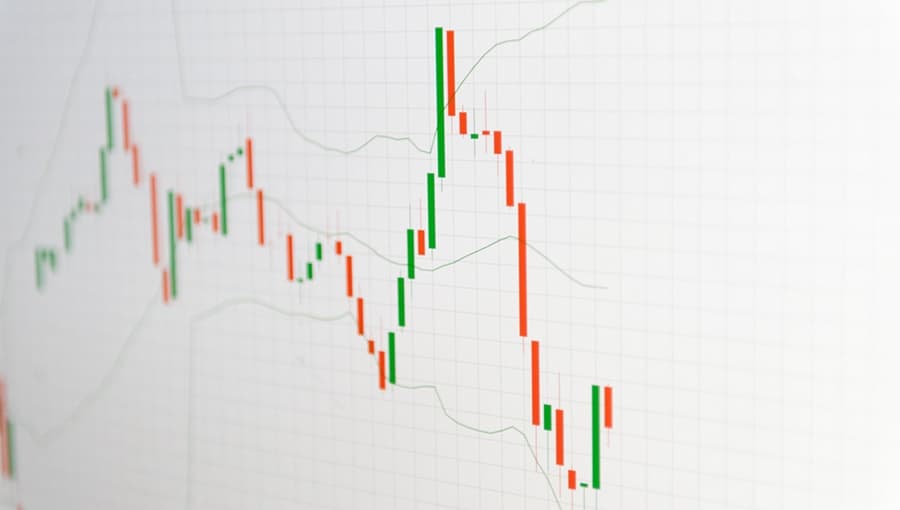Why Short-Term Trading? Understanding the Benefits & Strategies That Work
Traders usually identify themselves with the timeframes they trade. One refers to him or herself as a day trader, another a position trader, a third a short-term swing trader.
To us traders this is all quite normal, but to the non-trader, it can seem a little weird.
But knowing who you are as a trader is vital; it defines your specialty, what you’re best at and how you make money.
We use timeframes to aid us in our buy and sell decisions.
Our trading techniques might work better on one timeframe than another. And, many of us even use multi-timeframes to increase trading success.
Why are traders so obsessive about timeframes? In this post, I’ll discuss all that and will cheekily suggest why I see short-term trading as your best option while trading here at Mitrade. I will also show my strategies that work in short-term trading.
The Different Trading Timeframes
In trading, there are five different types of traders. Scalpers, day traders, short-term traders, position traders, and long-term investors. Each style has its own methods and techniques.
And each also attracts a certain personality. Below, I’m going to explain in more depth, what type of trading each is and the skills required.
1. Scalpers
This group of traders makes very rapid trading decisions using 1-minute to 10-minute charts. In one whole trading day, they can make multiple trades very short-term trades.
Their style of analysis is technical but they’ll also be aware of up-and-coming news which can affect their trading positions. They may choose to step aside as news is released or trade it.
2. Day trading
Day trading involves entering positions and exiting positions within one trading day just like scalping, but the timeframes are longer.
For example, day traders will use 15-minute through to 4-hour charts. Similar to scalpers, they won’t hold positions overnight; instead will always close trades before the end of the day.
They rely heavily on technical analysis but also look out for news events that could affect the market.
3. Short-term trading
Short-term traders take positions from two days through to roughly two weeks (although there’s no standard definition). Unlike the previous two groups, they prefer to hold positions overnight.
This group of traders predominantly uses daily charts for market timing.
Like scalpers and day traders, they’re heavily reliant on charting techniques but aren’t nearly as focused on news releases; simply because news just doesn’t affect short-term positions as much as intra-day ones. Of course, they can choose to trade around news releases, but it’s not essential.
They may use sentiment to increase trade success, finding extremes in such things as the VIX, and the Put Calls ratio important.
4. Position trading
It’s longer than that of the short-term trader, generally lasting from a couple of weeks up to 3 months.
Position traders use daily charts and weekly charts. They’ll also use longer-term sentiment indicators such as the COT report when trading FX and commodities, and market breadth when trading stock indexes.
They’ll also be more likely to use fundamentals in their decisions.
5. Long-term investing
These are trades or investments for the long term. If you hold a stock portfolio it’s probably in this timeframe you’ve been holding it.
It's the timeframe used by Warren Buffet and Jim Rogers. Long-term investors don’t use technical analysis. Fundamentals are where it's at here.
Trading Online With Mitrade
The Skills Needed For Each
Each timeframe has distinct advantages and disadvantages. And each will likely attract a different personality type.
Warren Buffets' favorite hobby was to take home company balance sheets to study – not everybody’s idea of excitement! It is unlikely though you’ll ever find a scalper doing this.
Both scalping and day trading require an ability to handle huge amounts of pressure. They require lightning-speed reactions and the strongest of convictions once a trade has been made.
Scalping or day trading is no place for the faint of heart! As an intraday trader, you’ll need exceptional technical trading ability. It requires long hours of concentration sitting in front of the trading screen.
I liken scalpers and day traders to Formula One racing drivers. Ultra-quick reaction time, high levels of concentration, and a total dedication to what they’re doing.
It does require a degree of patience, as trade setups don’t occur each day.
With short-term trading, you’ll also need a solid grounding in price action patterns, or support resistance techniques. Also, it’s advisable to be aware of what is going on in the world, in terms of economics and geopolitics – nothing too deep – just as general knowledge.
Position trading requires oodles of patience waiting for trends to begin. It also needs stoicism to take many small losses as you probe the market for the larger trends
Rather than price action type setups your chosen technical style will include a mix of indicators, cycle analysis, long-term trendlines, and moving average crossovers.
You'll also need the ability to let profits run as long as possible. This is out-and-out trend trading, so squeezing out as much profit from the trade is essential.
Long-term investing involves a deeply analytical skillset.
You’ll be looking at supply-demand and macroeconomic data, so understanding economics is essential. And like Warren Buffet – a love of accounting principles is preferable too!
Trading Online With Mitrade
The Problems With Day Trading, Position Trading, And Investing
It took me ages to find out the best style for me. It was a trial and error process. But when I did recognize where my trading skills lay, it made all the difference to my P&L.
Day trading, position trading, and long-term investing simply didn’t work for me, and I am going to go out on a limb and say they aren’t the best choice for most of us.
Issues with Intraday Trading
One of the critical factors in trading of all types is being able to handle the losses.
When you trade intraday, the sheer speed at which losses occur can knock the stuffing out of most of us. And once you’ve lost your mental poise, you're prone to all sorts of bad trading habits. Things like revenge trading, and letting your small losses become huge.
It can happen with any type of trading, but with day trading losing your mental balance can become acute.
The other problem with intraday trading is that technical analysis just doesn't work as well as on the higher timeframes.
Issues with Position Trading
This is the mirror opposite of day trading in some ways. The duration of a trade can be weeks and months which causes its own set of problems.
There is simply not enough to do. We become impatient. We start messing with perfectly good trades.
But IMO worst of all is seeing a trade go up sometimes for weeks on end, making huge paper profits, only to then see those profits disappear because you’re using a wide stop-loss. It’s a terrible feeling, and one a position trader has to deal with regularly.
On top of this, markets just don’t trend that often. Somewhere in the region of 70% of the time markets are consolidating or going sideways.
Issues with Long-Term Investing
If you’ve ever taken an economics course, you’ll appreciate it’s not everyone’s cup of tea. Hats off to you if you even completed it!
Fitting together all the moving pieces of the global economy can be like one giant 3D game of chess
The fundamental analysis was never meant to be a market-timing tool. It can be weeks, months, years and yes even decades for true fundamentals to be recognized by the market.
I’d say if you want to invest for the long-term, then Forex or CFDs are not the ideal way to do it. Much better to use ETFs or other non-leveraged instruments.
Why Is Short-term Trading The Best Choice?
That was quite a thorough examination of the other forms of trading – which now brings me to short-term trading. This is the approach I use and the one I think is most suited to the majority of people.
Let’s see why I think short-term trading is a good fit:
● you’re not glued to the screen for large portions of the day
● not nearly as much stress as trading intraday
● using a tight stop-loss means you don’t give back too much in profit
● regular feedback – you get to ring the cash register often
Short-term Trading vs Day Trading
There's a fallacy among those who want to day trade that because more trades are made, more profit can also be made. This is simply not true.
Yes, there are more signals generated - but the quality of those signals is generally poor.
Unlike intraday setups, daily price action signals are much clearer. Trades last longer, without the random noise that often triggers a stop loss prematurely.
When using daily charts, the winning % of most trading systems is higher than intraday trading systems. Daily charts are the sweet spot when it comes to applying technical analysis!
Short-term Trading vs Position Trading or Investing
Are you more likely to know what you’re going to be doing in the next two days or the next two months? Or two years?
For most of us (unless you’re an obsessive long-term planner), you’d agree, the next two days. Well, do you think the market is any different?
When trading the market It’s more accurate predicting what will happen in the next few days than weeks or months.
Anything can happen in the long term. Black swan events, such as the coronavirus, came out of nowhere and are decimating the economies of the world. Who can have predicted that a year ago?
But as short-term traders, we can be nimble with our trading and adjust our plans accordingly.
Trading Online With Mitrade
How To Trade Short-term ? Strategies That Work
Price action trading is the most realistic way to profit from short-term gyrations in the market. I wrote a whole post on price action here and introduced two of the strategies that I use.
But there are many other strategies besides. Price action techniques such as Pin bars or Demark Trendlines, Outside Bar reversals to name but three. Alternatively, there are other ways to trade short-term such as support resistance or Fibonacci based techniques.
In closing this article, let me introduce you to another short-term trading strategy that I have used successfully over the years.
Its goal is to capture a reversal in price over the past three days.
Anyway, look at the two charts of the GBP/USD below. They are both daily charts, with the black line representing a 15-day simple moving average. On the charts, I have labeled where I bought and sold each.
The system works as follows:
1. The high of the last day must be lower than the previous day
2. The high of the previous day must be higher than the 15 SMA
3. IF TRUE THEN
4. Place a buy stop order 2 pips above the high of the previous day
5. Place a sell stop order at the value of low of the previous day
6. IF the order is NOT triggered after one day THEN cancel the order
7. IF the order IS triggered then move the trailing stop to new higher low consecutive until closed out
With short-term trading, this is the type of strategy that works well. It's simple and to the point. And it’s a mechanical strategy meaning there’s no second-guessing.
Short-Term Trading at Mitrade
For some (maybe yourself) who don't have time to monitor markets like a day trader.
Or, for those who don’t understand the workings of the economy like a long-term investor; short-term trading can be your way to participate in the financial markets.
Forex and Contracts for Difference ( CFD) are the ideal trading vehicle. The ability to trade on margin and a wide choice of markets, coupled with a state-of-the-art trading platform means you really can carve out your niche as a short-term trader.
If you’re looking to do that then why not open a demo account with Mitrade?
Trading Online With Mitrade
* The content presented above, whether from a third party or not, is considered as general advice only. This article should not be construed as containing investment advice, investment recommendations, an offer of or solicitation for any transactions in financial instruments.
- Original
- Trading Analysis
Risk Warning: Trading may result in the loss of your entire capital. Trading OTC derivatives may not be suitable for everyone. Please consider our legal disclosure documents before using our services and ensure that you understand the risks involved. You do not own or have any interest in the underlying assets.



